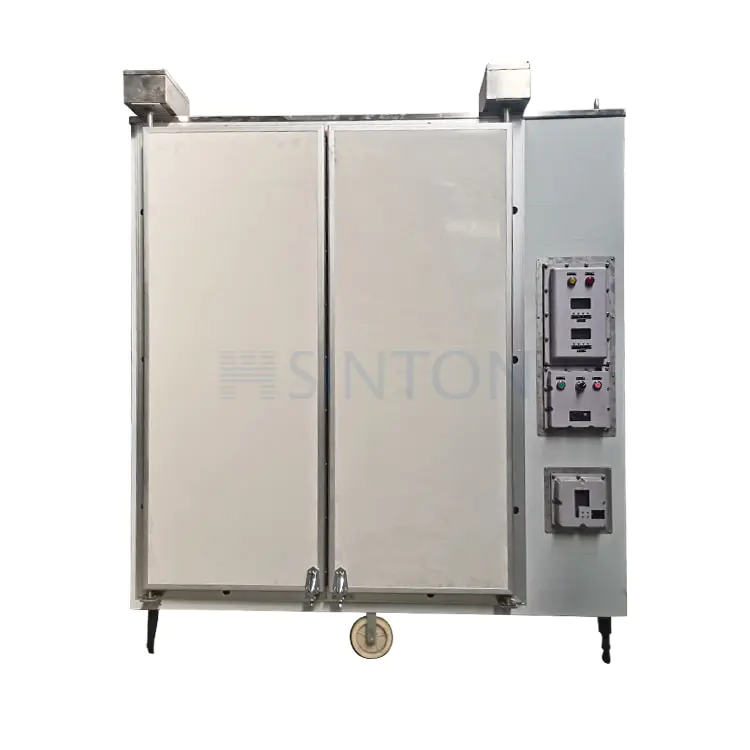WhatsApp: +86-185-5601-8866
Heating Equipment
News

2024-09-09
Over-temperature Protection: Over-temperature protection is an essential safeguard in electric commercial drying ovens, ensuring the equipment never exceeds a dangerous heat threshold. This system typically includes a secondary, independent thermostat or thermal fuse that continuously monitors the internal temperature. If the oven's heat exceeds the set limit — due to prolonged operation, malfunction, or unexpected environmental factors — the over-temperature protection system immediately cuts off power to the heating elements. This rapid response prevents catastrophic overheating, which could otherwise lead to irreversible damage to the oven, deformation of materials inside, or, in extreme cases, fire hazards. This built-in fail-safe is crucial in industries where precise temperature control is vital, and any deviation can compromise product quality or operator safety.
Advanced Temperature Control System: The temperature control system in an electric commercial drying oven is a sophisticated mechanism designed to offer precision and stability. Typically governed by digital controls with a user-friendly interface, this system allows for fine adjustments in temperature to suit various drying applications. Modern ovens are equipped with PID (Proportional-Integral-Derivative) controllers, which constantly assess the actual oven temperature against the set value, making minute corrections to the power output of the heating elements. This dynamic regulation ensures that the oven maintains an exact temperature throughout the drying cycle. By preventing temperature fluctuations, this system minimizes the risk of the oven accidentally overheating, even during long, continuous operation. This level of control is critical in industries like pharmaceuticals, food processing, and electronics, where even a slight variation in drying conditions can affect the final product’s integrity.
Automatic Shutoff System: The automatic shutoff system is a vital feature that significantly reduces the risk of overheating. It works by cutting off the power supply to the oven after a predetermined amount of time or when certain conditions, such as an excessive rise in temperature, are met. This system is particularly useful in environments where the oven might be left unattended for extended periods. For instance, in industrial settings where batch drying occurs overnight or without direct supervision, the automatic shutoff ensures that the oven doesn't continue to operate beyond safe limits. This feature can be paired with programmable timers, allowing operators to set specific drying times based on the material being processed. This not only protects the equipment from overheating but also enhances energy efficiency, as the oven will not use more power than necessary.
Ventilation and Air Circulation System: Proper ventilation is essential for maintaining a stable and safe internal temperature. Electric commercial drying ovens are equipped with advanced ventilation systems designed to manage heat distribution and ensure a constant flow of air within the chamber. Forced-air circulation systems, often powered by fans, play a critical role in this process. These fans work to evenly distribute hot air throughout the oven, preventing hot spots that could lead to localized overheating. Exhaust vents or ducts allow for the controlled release of excess heat and moisture. In high-performance ovens, these systems are finely tuned to balance airflow and temperature, ensuring optimal drying conditions without creating zones where excessive heat could accumulate. This feature is especially important in ovens used for drying organic materials, textiles, or delicate electronics, where uneven heating could lead to product spoilage or safety risks.
Hot Air Circulation Drying Ove

Looking For Business Opportunity?
Request for a call today

WhatsApp: +86-185-5601-8866
Tel: +86-185-5601-8866
E-mail: [email protected]
Address: Sinton Building, No. 886 Yandu Road, Yandu District, Yancheng City, Jiangsu Province
Friendly Link: www.cn-lvdao.com www.sealing-china.com
Products
Message